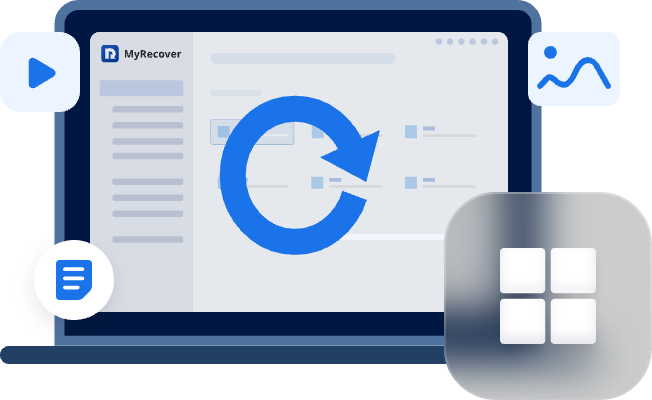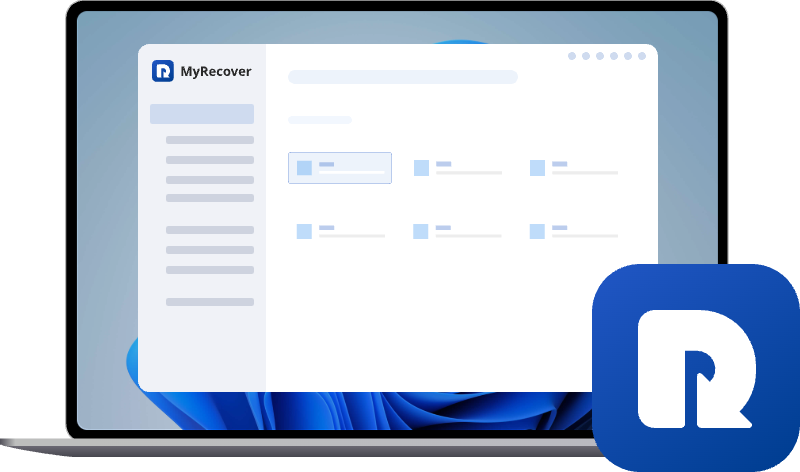[Fixed] How to Recover Data from Inaccessible Partition on Windows
It is an extremely troublesome issue that a partition becomes inaccessible. Does it mean that the data in the partition can never be read? Don't panic. This article will help you solve this problem and also provide some methods to help you recover data from the accessible partition.
Why the Partition is not Accessible?
Suddenly can't access your important files? When a partition becomes inaccessible, panic sets in—but understanding the root cause is the first step to recovery data from inaccessible partition. Here are 8 critical reasons why your hard disk might be unreadable.
- File System Corruption: Disk management shows the partition as RAW or no file system and file explorer appears "drive not formatted" error.
- Incorrect Drive Letter: Drive is visible in Disk Management but not in File Explorer. Drive letter may conflict with another drive or no drive letter is assigned.
- Partition Table Error: Partition shows as "unallocated" or "uninitialized" in disk management.
- Permission Issues: When you try to open a file or a folder, a prompt saying "Access is Denied" will pop up.
- Viruses and Malware Infection: Viruses and malware can damage the partition and the files stored on it, or lack access to the drive.
- Connection Issues: Incorrect connection may cause partition not detected in Disk management.
- Encryption Problems: Encrypting a partition can ensure that the data within can only be accessed after entering the correct password or recovery key, thereby preventing unauthorized access.
- Physical Damages: If the partition hardware suffers physical damage or has bad sectors, it will cause the data within the partition to be unreadable.
Quick Fixes for an Inaccessible Partition (Before Data Recovery)
In response to the aforementioned reasons that may cause partition inaccessibility, these methods might help you quickly repair the problem. Once this issue is resolved, you might retrieve the access to inside data, and there will be no need to look for data recovery methods.
1. Run CHKDSK in Command Prompt
The Command Prompt in Windows serves as a command - line interpreter. It enables users to communicate with the operating system by inputting text - based commands. You can fix disk errors and recover data using Command Prompt.
step 1. Open command prompt and run it as administrator in the start menu.
Step 2. In the opened command prompt enter the command chkdsk G: /f /r to scan and fix file system errors (replace the drive letter "G" with your actual inaccessible drive letter).
2. Assign a New Drive Letter
The inaccessibility of the partition caused by the missing or contradictory hard drive letter is easy to fix. You just need to add a correct and non-duplicated drive letter.
Step 1. Right click "This PC " icon to open disk management, then right click the inaccessible partition.
Step 2. Choose "Change Drive Letter and Paths" and assign a new correct drive letter.
3. Use Professional Partition Table Recovery Tool
You can use professional partition table recovery tool to fix table errors, such as TestDisk.
4. Get Permission for Inaccessible Partition
If you have ever changed your Windows account and that account has not been granted permission to access a specific partition, a situation where "Access is denied" will occur.
Step 1. Double-click This PC icon and select the inaccessible partition.
Step 2. Right click to choose "Properties" and "Security", then select "Advanced" to change the permission.
Step 3. Choose Add > Select a principle > Advanced, then click "Find now" to choose "Authenticated users".
Step 4. Mark the "Full control" option and click "Apply".
5. Check Connection
Check the partition connection with your computer. If still unconnected, you can try different cable to connect.
6. Scan and Remove Malware
Some malware can not only degrade the performance of a computer but also maliciously damage files and modify access permissions. To keep the computer running smoothly, it is necessary to regularly scan for viruses and malware.
Step 1. Boot into safe mode to prevent the malware from running.
Step 2. Run Windows Defender or other trusted antiviruses tool to detect and remove any malicious files.
7. Unlock with Correct Password
Ensure you using correct decryption key to access the partition. If you lost the password, you can try using BitLocker (Windows) to unlock the partition.
8. Seek Professional Service to Repair Physical Damage
Non-professionals attempting to repair casually may cause secondary damage to the hard drive. Therefore, seeking data recovery services from professionals is the safest option.
How to Recover Data from Inaccessible Partition on Windows-MyRecover
If none of the above methods can effectively solve the problem of partition inaccessibility, does it mean that the data in the hard drive can never be recovered? That's not the case. MyRecover is a method worth trying. It doesn't require complex operations to repair hard drive problems before recovering files, and the simple graphical user interface will give you more confidence in recovering files.
Step 1. Download and install MyRecover on your computer (avoid installing it on the inaccessible drive).
Step 2. Launch MyRecover and it will automatically recognize all of the partition on your computer regardless of functional or inaccessible. Then select the inaccessible partition and click "Scan".
- ★Tips:
- If you can't find the partition that is inaccessible, you can use the Partition Lost Recovery function. This function can recover data from recently deleted or lost partitions on this computer.
Step 3. Once the scanning process completed, you can choose the data you want to recover from the list of recoverable files and click "Recover".
Step 4. Select a safe location to save the recoverable data.
When the message " Your files have been recovered successfully” shows on the screen, you can check the files on the destination folder.
If the worst-case scenario occurs and the hard drive fails to boot completely, there's no need to panic. The "PC crashed recovery" function of Professional version of MyRecover can still help you recover data from unbootable hard drive.
Step 1. Prepare a USB flash drive and connect it to a working computer (take USB drive as example).
Step 2. Click "USB Boot Device" under the "PC crashed recovery" and click "Create" to create a bootable media.
Step 3. When a bootable device created successfully, insert it in the old computer.
Step 4. Enter the BIOS system and choose the bootable media to boot the computer.
Then you can recover data from the unbootable computer/hard drive using the same method described above.
Summary
In short, there are various reasons for the inaccessibility of the partition. You can try various methods to fix this problem before attempting data recovery. If the problem still cannot be fixed, the most important thing is to recover the data first. You can try professional data recovery software, such as MyRecover.
Its operation is very user-friendly, and even non-professionals can independently complete data recovery from an inaccessible partition. The Professional version of MyRecover is suitable for users with more advanced needs. It supports data recovery from an unbootable computer/hard drive and also allows users to preview the file content before recovery.


